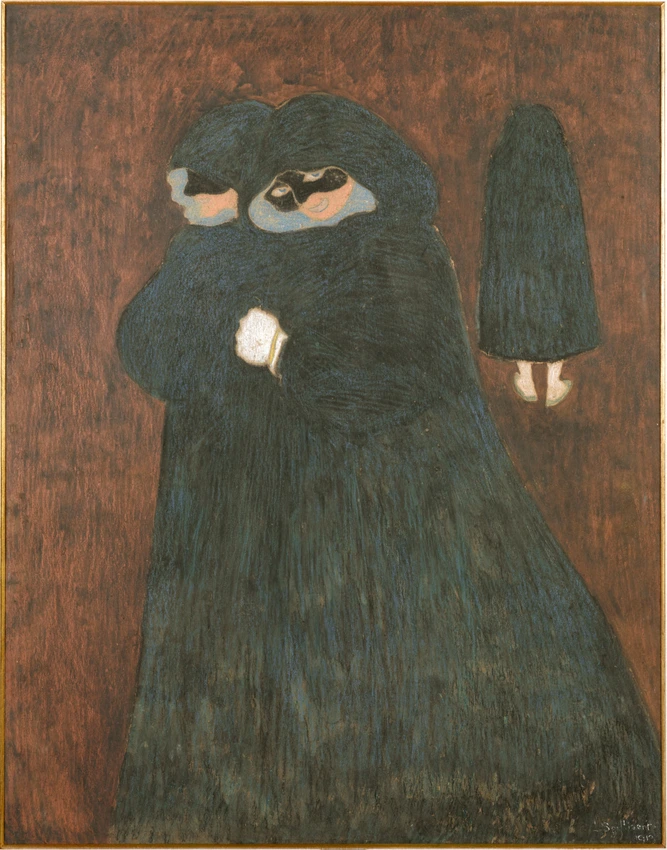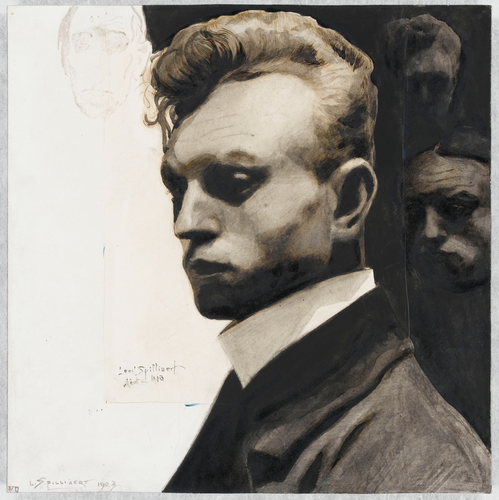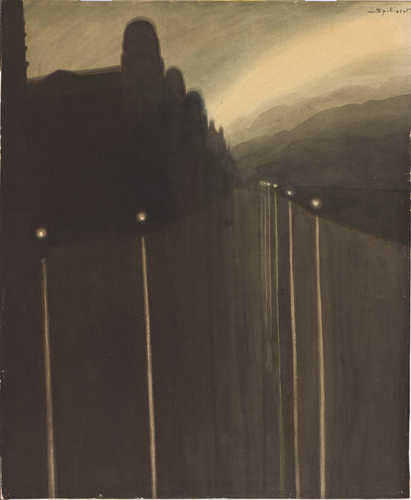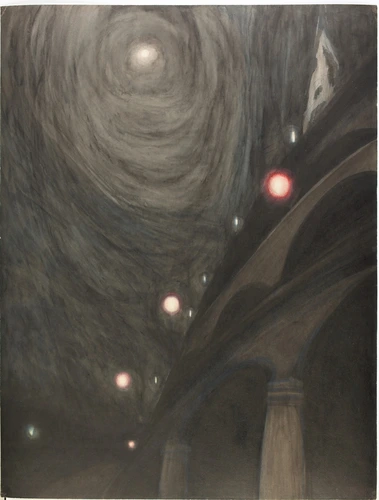Les Dominos
Spilliaert, a self-taught artist, created his own personal world somewhere between Symbolism and Expressionism, mainly using graphic media: ink, gouache, watercolour, pencils, chalk and pastel were his preferred techniques. He produced his most visionary works before 1914, from his anguished self-portraits (Self-portrait with Masks, 1903) 1903 to the nocturnal landscapes, bordering on abstraction, of his home town of Ostend (Moonlight and Light ; Dyke at Night. Reflections of Light).
The Dominos, in a striking format, presents three mysterious characters concealed by their carnival costumes, placed against an indeterminate background. The three figures, rendered as synthetic, triangular masses, and occupying virtually the whole sheet, are broken up by a few rhythmic touches of white: the gloved fist, the eyes, and the feet of the figure in the background.
With perspective provided only by the scale, and without depth, the static character with its back to us balances the forward movement to the left of the figures in the foreground.
In spite of its radical formal simplicity, the drawing is not without a certain theatricality. Indeed, a narrative begins to take shape through the eyes and the smile of the central Domino. This woman, masked and disguised, smiling yet clenching her fist, is intriguing, and raises the question of identity.
The subject of the work, as pointed out by Anne Adriaens-Pannier, a specialist in Spilliaert’s work, is closely linked to the Ostend carnival, a tradition that inspired other paintings by Spilliaert as well as a series of preparatory drawings for The Dominos. Just like his compatriot Ensor, Spilliaert was interested in the ambivalences of the mask, both concealing and revealing, playful and tragic. The disturbing strangeness linked to the ambiguity of the masked figure - at once animated and fixed in its disguise - is here shot through with a transient frivolity. The game of amorous seduction is not without anxiety: the smiling woman is accompanied by two similar figures, ghostly and rigid, and her fixed smile and clenched jaw, contrasting with the young, pink flesh, is reminiscent of the smile of the skeletons in a “danse macabre”.



